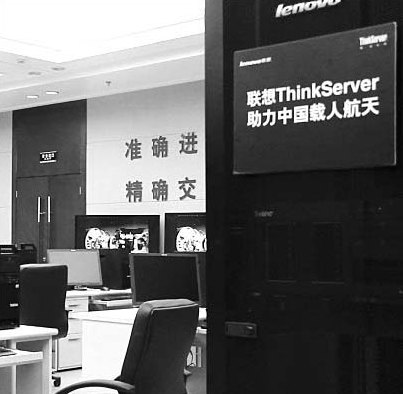

Shown here is the manned spaceflight simulation lab. Provided to China Daily
Before the Shenzhou X manned spacecraft took off from Northwest China's Gobi Desert on June 11, Chinese space scientists needed to be prepared to handle any situation.
And to ensure the success of this space program, scientists relied on Lenovo Group Ltd's tools to simulate the 15-day journey at the laboratory before lifting three astronauts into space.
One example is the ThinkServer and ThinkStation products that can be used in spacecraft design, flight simulation, and orbital calculation products.
The company also helps scientists rehearse each step of the program to ensure they have an idea of what will likely happen following the launch.
Even though space projects can be known for their complexity and huge investment, China has saved resources when using these products by spending the amount equal to 10 percent of that in the developed nations, according to the company.
Astronauts were also trained on the ground using a system powered by Lenovo's serving to ensure the docking process went smoothly.
The simulation system created various scenarios for astronauts to practice docking skills.
For example, the craft was equipped with 12 engines for orbit correction. And the minimum thrust was one Newton (a gentle tap of table using the index finger will generate similar amount of force).
Shenzhou X's docking with Tiangong-1, a space module launched in 2011, was considered one of the most high risk phases because both vehicles were traveling at more than 28,000 kilometers per hour above the atmosphere.
For now, ThinkServer and ThinkStation will help record the minimal movements and translate the readings into real-time monitoring graphics.
It is a task with the world's most advanced workstation products, according to the company.
"Such simulations not only require powerful computing capability, but also demand remarkable stability in the entire process," said the company's officials.
Lenovo's servers were also used in wind tunnel testings, an experiment that required heavy spending, a long preparation process, and a large energy cost.
To reduce the frequency of using such expensive physical tunnels, scientists built a virtual tunnel on the computer to simulate every problem Shenzhou X could face in a wind tunnel.
The company said it asked for the symphony of three major units: fluid dynamics computing, visualization and three-dimensional interaction.
Furthermore, the company's ThinkStation product will render the computer-generated videos, showing researchers detailed graphics they could get in a wind tunnel test.
"This kind of simulation work has largely saved the budget and the development time," the company said.
As China's space program moves forward, the demand for high-end technology is expected to increase, according to the company.
And Lenovo - as the nation's leading technology provider - is ready to support the space industry in the near future, the company said.
Lenovo beats HP as No.1 PC firm
2013-07-12Lenovo tops Malaysia's PC sales
2013-06-20Lenovo targets unit sales of 100 million
2013-04-25Jerry Yang joins Lenovo board as observer
2013-02-22Copyright ©1999-2018
Chinanews.com. All rights reserved.
Reproduction in whole or in part without permission is prohibited.